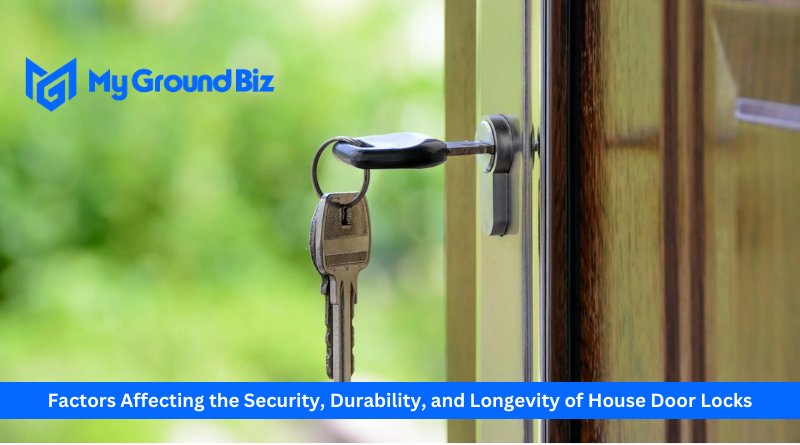
Imagine for a moment that your door hardware is like a trusty old car. If you take care of it and protect it from the elements, it may last for years. But if you leave it out in the rain and snow without any shelter, it’s bound to rust and wear out much faster. So, let’s dive into the world of door hardware and explore how various environmental factors can impact its lifespan.
Humidity and Moisture Levels
Humidity plays a huge role in the health of your door hardware. When the air is full of moisture, it can lead to rust on metal parts. Think of metal as a sponge; when it absorbs too much moisture, it can become damaged. If your door is exposed to high humidity, like in coastal areas, you might notice that the metallic components start to show signs of wear more quickly than in drier climates.
However, it’s not just about rust. Moisture can also lead to swelling in wooden doors or mold growth around the hardware, which can affect functionality. It’s essential to keep an eye on how damp or dry your environment is and to consider using *corrosion-resistant materials* like stainless steel or brass for added durability.
Temperature Extremes
Temperature fluctuations can cause materials to expand and contract. For instance, in a hot climate, the metal in your door hardware can heat up, expand, and then cool down, leading to potential warping or damage over time. Similarly, in colder climates, freezing temperatures can cause certain materials to become brittle or crack.
Here’s a practical example: if you live somewhere that experiences harsh winters, you might have noticed how difficult it is to turn a lock or handle during freezing weather. This isn’t just annoying—it can wear out the hardware faster if you’re not careful. So, ensuring that your door hardware is rated for the climate you live in can help extend its lifespan.
Sunlight Exposure
Believe it or not, the sun can take a toll on your door hardware too. UV rays can degrade the finish and cause fading or discoloration on the hardware over time. This is particularly true for painted or coated surfaces. If you’ve ever seen a once-vibrant color turn into a dull shade, you know exactly what I mean.
To protect your hardware, consider applying a UV-resistant coating or choosing hardware that is designed for outdoor use. This might seem like a small detail, but those tiny features can make all the difference in how long your door hardware lasts, especially in areas with lots of direct sunlight.
Air Quality and Pollution
Air quality might not be the first thing that comes to mind when you think about door hardware, but it’s essential. If you live in a city where pollution levels are high, the *chemical compounds* in the air can corrode your hardware faster than you realize. Smoke, dust, and other airborne particles can settle on your hardware and cause it to degrade.
Regular cleaning is vital here. Wiping down your door hardware with a damp cloth can help remove any buildup of dirt or contaminants. Choosing materials that can withstand harsh conditions is also crucial. Consider options like bronze or coated metals, which tend to hold up well in polluted environments.
Installation and Maintenance Practices
Even the best door hardware can succumb to the elements if it’s not installed or maintained properly. Installation should be done carefully to ensure that all components fit snugly and function as intended. If hardware is installed incorrectly, it can lead to misalignments that leave gaps, allowing moisture and dirt to penetrate.
Additionally, routine maintenance goes a long way. This includes lubricating hinges and locks regularly and checking for signs of wear. You might be wondering how often to do this? A good rule of thumb is to check your door hardware at least twice a year. Investing a little time in maintenance can save you a lot of money and hassle in the long run.
Choosing the Right Materials
When it comes to ensuring the longevity of your door hardware, material choice is critical. Not all metals are created equal. For example, stainless steel is known for its high corrosion resistance, making it a smart choice for areas with high humidity or rainfall. On the other hand, brass has a beautiful finish but may require more maintenance to keep it looking its best.
Think about where you’ll be using the hardware. For outdoor applications, you might lean towards materials designed to withstand the elements. For indoor use, aesthetics may take precedence, but durability shouldn’t be ignored. Consider mixing style with substance to find options that will last.
Final Thoughts on Door Hardware Longevity
Understanding the environmental factors affecting door hardware can empower you to make better decisions for your home. Just like a well-cared-for plant thrives in the right conditions, your door hardware will benefit from attention to its environment. By keeping humidity, temperature, sunlight, air quality, installation practices, and material choices in mind, you can help your hardware last longer.
Remember, investing in high-quality hardware and being mindful of these factors not only enhances your home’s security but also saves you from costly replacements down the line. So the next time you think about upgrading or replacing your door hardware, keep these insights in your back pocket. After all, it’s the little things that can make a big difference!
